 Baskets of The Northwest People:
Baskets of The Northwest People:Gifts From The Grandmothers
A comprehensive study of baskets woven in the Pacific Northwest during a renaissance of basket making, circa 1860 through the 1930s. Basketry expert Natalie Linn provides insights on each basket. Klickitat basketmaker Nettie Jackson talks about her process of becoming a weaver while weaving a basket. Storyteller and singer Johnny Moses introduces the program with a song and speaks of Native traditions.
Included are baskets from the Aleut, Eskimo, Tlingit, Haida, Tsimshian, West Coast People (Makah, Nootka) Thompson River, Chilcotin, Lillooet, Skokomish, Snohomish, Nisqually, Quinault, Chehalis, Wasco, Wishram, Cowlitz and Klickitat People. Interwoven in these baskets are the history, imagination, and spirit of the people who made them.

Natalie Linn
"This is the largest, most beautiful example of a Tlingit spruce root basket I have ever seen; one that is made with geometric motif, one that is made in the traditional way, with bear grass, dyed bear grass, and done traditionally with what is known as false embroidery. You do not see the weaving on the inside on any Tlingit basket.
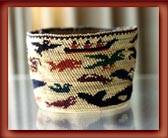
 Storyteller:
Storyteller:Johnny Moses, Tulalip Nation
(Whis stem men knee)
"The older people, the Grandmothers, they believed that all the baskets had a song--a song and a story to tell. The baskets were very important in the Native American culture. All our stories and our songs and our feelings about our people, the people that we loved, are woven into the baskets. When looking at some of the designs in the baskets, sometimes you can feel those people, those ancestors from way back."
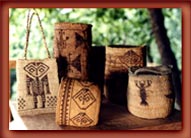
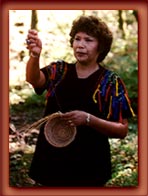
Nettie Jackson, Klickitat
"It was a special gifts right from the beginning for me and my People.
It was my Mother’s death that brought on this willingness and eagerness to learn this (basket making), I quit it about a thousand times when I first learned. It took me four years just to learn to process my own roots, to go up to the mountains, dig them out, and peel them down. Sometimes in one day what I get out of the ground will take me maybe a month to process.
"Baskets of the Northwest People"
Baskets of the
Northwest People"
A comprehensive study of exquisite baskets
woven in the Pacific Northwest,
circa 1860 to the 1930’s.
Nettie Jackson demonstrates Klickitat basketry.
Storyteller Johnny Moses sings an opening song
and tells a weaving story. Hosted by basketry expert
Natalie Linn.
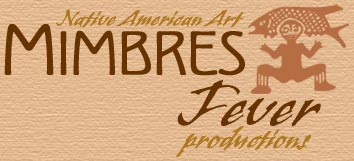 "Faithful to Continuance"
"Faithful to Continuance"Legacy of the Plateau People

Mimbres Fever Productions proudly announces the release of a new documentary exploring the
power and beauty of Columbia River Native American culture. Faithful To Continuance
weaves together exquisite artifacts with interviews from six exceptional Plateau artists
and one Treaty Fisherman.
Poet
"The sound of water tells the story well, in the sheen of river stone, a song is prevalent, faithful to continuance, the purity is a nuance, the memory, this certain way." Elizabeth reads from "Luminaries Of The Humble" and "Seven Hands, Seven Hearts", two books of poetry and verse on Plateau culture.

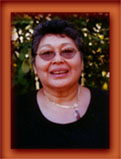 Lillian Pitt
Lillian PittSculptor
Lillian brings to life the spirit of her Ancestors. Motivated by rock art images along the Columbia River, she produces large scale metal sculpture as well as fine jewelry that reflects the 10,000 year tradition and beauty of her People. "Seeing the image of "She Who Watches" was a very profound moment for me because it let me know exactly who I am and it gave me a sense of power no one can remove from me."
Beadwork Artist
Maynard is carrying forward the traditional Plateau art forms he learned from his Grandmothers. He is an outstanding beadwork artist and a dedicated teacher of all aspects of traditional Plateau culture.
"It’s something that I hold very special to me, being born into a family of very knowledgeable elders in all aspects of our traditional life."
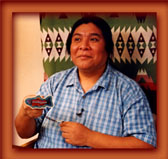
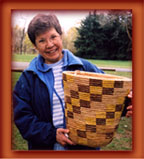 Elaine Timentwa Emerson
Elaine Timentwa EmersonBasket Weaver
Elaine is a well-respected artist and teacher of cedar bark basket weaving. "When I was growing up, we were not allowed to speak our language, we were punished. I think that’s what made me do the baskets. Also, I make baskets because I want people to know....we’re still here."

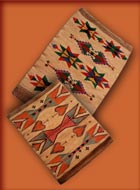
 Joe Feddersen
Joe FeddersenPrint Artist
Joe creates exquisite contemporary prints inspired by Plateau basketry and landscapes. "My work is about the quality of light and the feel of the landscape." Joe is also a very creative basket maker. He teaches at Evergreen State College.
Wasco Basket Weaver
Pat is restoring the art of Wasco basket weaving. With advice from elders in her community and guidance from basketmaker and writer Mary Schlick, she has relearned the art of full-turn twining. "My feeling of well being and happiness goes into this basket. It has part of my spirit in it...
my hope is that it will out live me."

 Clifford Shippentower
Clifford ShippentowerTreaty Fisherman
"It's our cultural identity really....the salmon are. Everything revolves around the salmon. We use it for ceremonial purposes, for memorials, funerals, namings. We pretty much get our nutrition from the fish, we get our strength from the salmon".
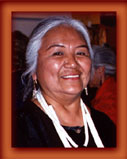
Vivian Harrison Stu Yat (pictured)
and Eugene Herrod
Faithful To Continuance is the fourth video in a series on Native American Culture, produced and distributed by Mimbres Fever Productions.
The Columbia River Plateau People are members of the Nez Perce, Colville, Umatilla, Yakama, and Warm Springs Nations. They reside between the Cascade and Rocky Mountain ranges and have a distinct and important culture which dates back ten millennia before first European contact.
Early Plateau People left the imprint of their culture on river rock in the form of pictographs, petroglyphs and sculpture; in exquisitely carved sheep horn bowls, in the shape and designs of their basketry, their hide dresses, their beaded cradleboards and bags; and in the hearts and spirit of their descendants.
Contemporary Plateau Native artists are maintaining and evolving the enormously powerful art expressions of their culture. Legacy of the Plateau People shows the genesis of Plateau design in prehistoric stone effigy sculpture and follows the development of Plateau design to contemporary work. Native artists discuss their work, traditions, and visions for the future. Explanations of traditional Plateau art expressions are interwoven with exquisite artifacts from both museums and private collections.
No comments:
Post a Comment